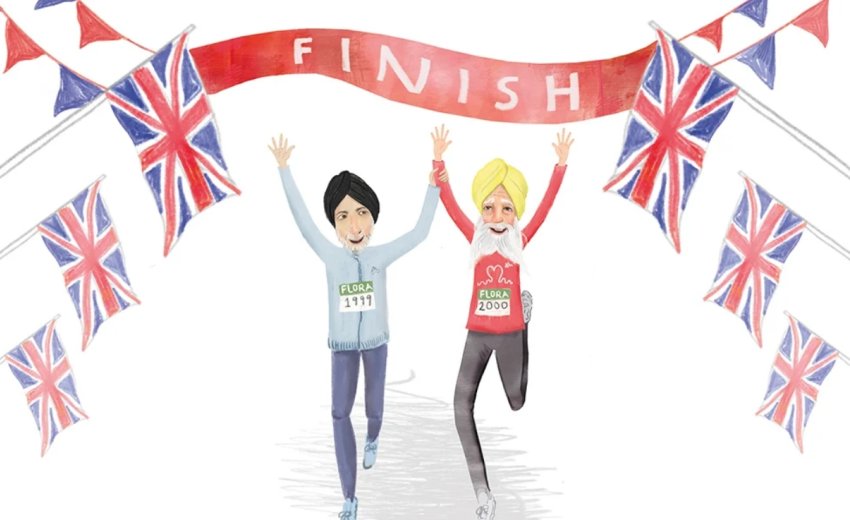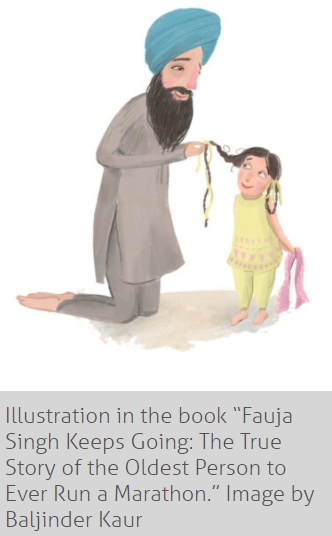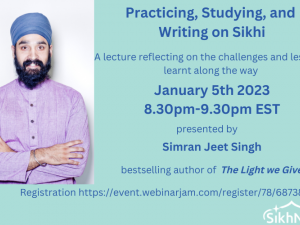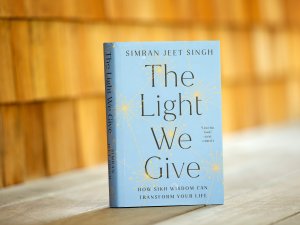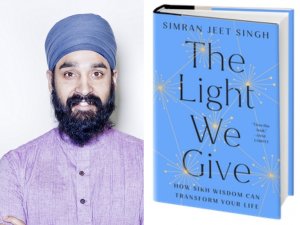(RNS) — I remember thinking in elementary school that if my classmates could just see characters with turbans and beards and brown skin in the books they read then maybe — just maybe — it would help them see my family as more normal and less foreign. I remember looking for these books every single time I went to a bookstore or our school library, and I remember, vividly, walking away disappointed every single time.
When my older daughter was born four years ago, I started looking for children’s books to share with her — and that same feeling of disappointment and invisibility came rushing back. Thirty years had passed since my own childhood, yet nothing had changed. I realized that no one else was going to write the book I wanted in this world. I also realized that until and unless I wrote that book, neither my girls nor their friends would ever encounter positive images of people who look like me.
It felt less like an option and more like a parental and social responsibility — would I continue to sit by idly as our kids were bombarded with messages that they should be ashamed of their cultural backgrounds and traditions?
That same year, I began to write a new children’s book, a biography of Fauja Singh, the oldest person to ever run a marathon. He also changed my life: The day he became the first 100-year-old to complete a marathon was the day that I signed up for my first. I’ve never stopped running since.
That his story helps humanize Sikhs who are so often seen as threatening, villainous and terroristic was only one of the many reasons I chose to write about Fauja. I believe that if kids can learn to see the humanity of those who seem least familiar to them, they can learn to see the humanity in everyone they encounter — including their own.
This belief led me to highlight some parts of Fauja’s life that help us all — children and adults alike — counter some of the stereotypes of what we consider success to look like. I want our kids to see people who struggle with disability and poverty and illiteracy and racism and ageism as worthy of dignity, respect and admiration. It’s a lesson in inclusiveness and open-mindedness, and it’s also an exercise in reimagining what our heroes might look like. What better way to instill these ideas than through storytelling?
Another reason Fauja Singh’s story spoke to me is that he has endured significant life challenges through perseverance and resilience: a disability that prevented him from going to school, never learning how to read or write to this day, losing his loved ones and working through loneliness. Witnessing him confronting these challenges head-on gives our kids the confidence that they can overcome the challenges that life throws their way.
I had my own challenges to overcome in writing this book, chiefly that I had never written a children’s book. Thankfully, I had seasoned writer Supriya Kelkar to coach me through the process of drafting a children’s book and was equally fortunate to catch the attention of Tanusri Prasanna, a literary agent with Foundry Media. We wrote a proposal together and sent it to Namrata Tripathi, an editor we both admired who led Penguin Random House’s new imprint Kokila. The rest, as they say, is history.
Or so I thought.
The idea of publishing this book was exciting and consumed me, especially when I realized it would be the first-ever children’s book from a major publisher to center on a Sikh’s story. We worked for more than two years on it before I got a set of proofs in the mail.
It was upon opening the package in the mail and holding the prints in my hand — highlighted by the exquisite artwork of Baljinder Kaur — that it first felt real. In that moment, I was transported back to my childhood dream of seeing someone in a children's book who looked like my family.
That evening, I sat down to read the book for the first time with my own family. My three-year-old squealed with joy when I turned to the page of Fauja Singh doing his daughter’s hair: “Hey! That’s you and me every morning!”
My heart melted. She saw immediately what I had been dreaming of my whole life: seeing herself and me as positive characters in a picture book. This is what we mean when we say that representation matters.
Representation also matters for marginalized folks because it can counter the negative messages all around us. It’s so sad to think about the messages our society sends to our kids about how to think about people who look like me. It hurts even more to think about how these messages will impact how my own daughter will see me, her loving father: when they see me getting pulled aside for additional screening at the airport or when they hear people whisper under their breath as I walk into a room. At least now, with this new children’s book, they will have another touchpoint of something positive to help round out their perspectives.
At a time when hate has been normalized and our children are susceptible to its toxicity, I can’t put into words how much it means to offer a small antidote through a story that instills compassion and understanding of those who are different from us. These are the values I want all of our kids to embody — mine and yours alike.

